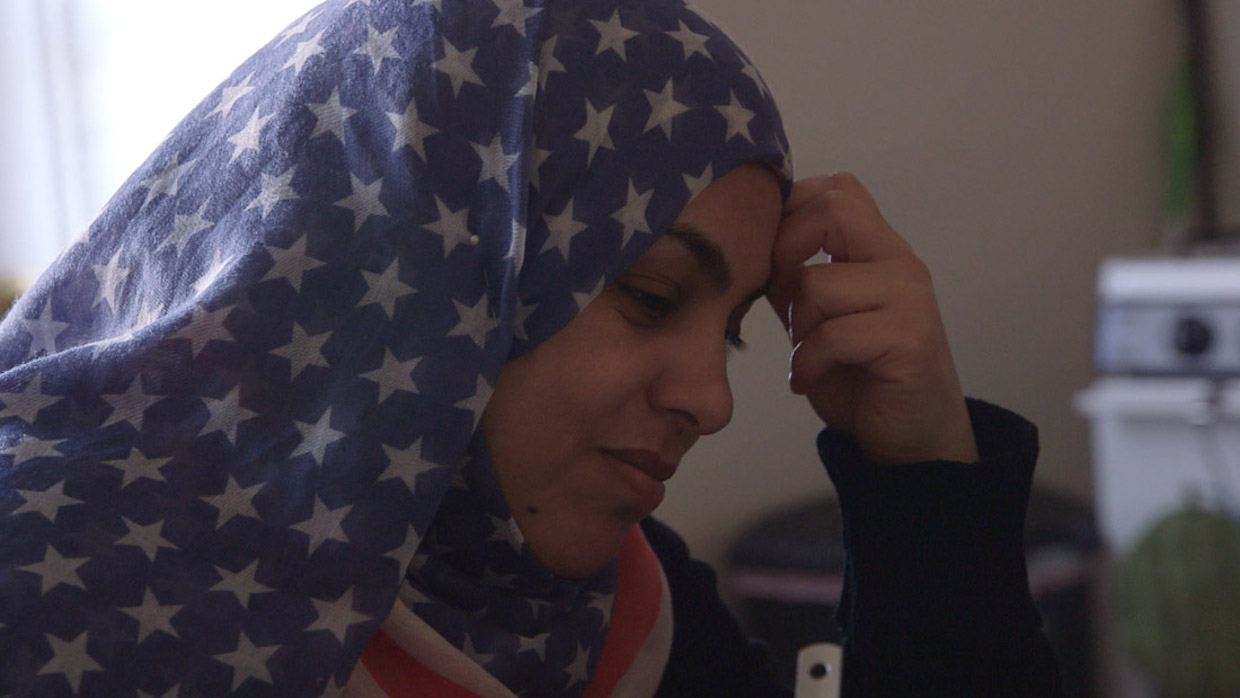 Back to selection
Back to selection
“What Would it Be Like to Start over from Scratch?”: Editor Toby Shimin on This Is Home
 This Is Home
This Is Home Tobi Shimin has edited more than two dozen documentary projects going back to 1988. In 2015 she cut the Sundance doc How To Dance In Ohio from director Alexandra Shiva, who returned to Sundance this year for This Is Home. The film, which won the audience award in the international documentary lineup, tells the story of four Syrian families as they move to the United States as refugees. Below, Shiva discusses the task of shaving 300 hours of dailies down to a 90 minute feature.
Filmmaker: How and why did you wind up being the editor of your film? What were the factors and attributes that led to your being hired for this job?
Shimin: I was lucky enough to edit Alexandra Shiva’s previous film, How To Dance In Ohio, a coming-of-age story about teenagers and young adults on the autism spectrum, which premiered at Sundance in 2015. In working together, we recognized that our mutual motivation in storytelling is to foster connections and a sense of shared humanity, especially with subjects who are often portrayed as “other.” This Is Home is a variation on that theme, so we both felt that I was a good fit for this story.
Filmmaker: In terms of advancing your film from its earliest assembly to your final cut, what were goals as an editor?
Shimin: In our first assembly of This Is Home, we agreed that one of the big challenges was to deepen a film that could easily become a solely political issue story. We wanted to make sure we were telling a character-driven story about people who the audience relate to on a human, emotional level. The prime directive was the question we kept asking ourselves: what would it be like to start over from scratch, to arrive in a new place, in a new culture, with a new language? With that as our filter, any scene in the assembly that did more telling than showing, we cut out. We then worked with the remaining scenes and shaped the story from there.
Filmmaker: What elements of the film did you want to enhance, or preserve, or tease out or totally reshape? How did you achieve these goals? What types of editing techniques, or processes, or feedback screenings allowed this work to occur?
Shimin: Our priority in unfolding this story was to make it as relatable as possible as we followed the story of the four families through their first eight months in this country. Alexandra formed a strong bond with the subjects as she filmed with them, and I fell in love with them in the footage, as I screened the almost 300 hours of dailies, but we only had 90 minutes to make an audience feel the same way. Knowing that while we wanted the vérité scenes to be as immersive as possible, but also knowing that all the dialogue needed to be translated and read by the viewer, we put the emphasis in editing on highlighting the most human, universal and emotional moments. We relied heavily on feedback screenings to gauge how close or far we were from this goal.
Filmmaker: As an editor, how did you come up in the business, and what influences have affected your work?
Shimin: I began professionally as a sound editor in both narrative and documentary film, before I switched to picture editing. Working in the realm of sound developed in me a deep appreciation of the psychology of atmosphere and subtlety, sometimes even on a subliminal level. I find that I am most drawn to stories wheresubtlety and subtext are as important as the main storyline.
Filmmaker: What editing system did you use, and why?
Shimin: I edited This Is Home on Avid. I cut my last film on Premiere and found that in working closely with my associate editor, Joy Reed, we struggled quite a bit sending project files back and forth. On this project, we knew we were going to be sharing a substantially larger amount of material, given all the translations, so we decided Avid was a better choice.
Filmmaker: What was the most difficult scene to cut and why? And how did you do it?
Shimin: The opening scene of This Is Home was both the easiest and the most difficult scene in the editing process. The actual crafting of the scene was relatively easy, but finding a scene to open a story like this was extraordinarily difficult. We wanted to bring the audience into the feeling of being disoriented but not lost, uprooted but not ungrounded, and in great need of help, yet not helpless. We knew it was important to also bring in the element of humor and humanity to a very fraught situation. I am extremely proud of what we landed on as our opening.
Filmmaker: Finally, now that the process is over, what new meanings has the film taken on for you? What did you discover in the footage that you might not have seen initially, and how does your final understanding of the film differ from the understanding that you began with?
Shimin: This Is Home began as a story about refugees – a group of people in search of safety and resettlement. I think, for all of us working on the film, the story became much more human and personalized. It became a story of families – mothers and fathers, husbands and wives and children. It became a story of people we know and feel connected to by walking alongside them as they start their lives over.
